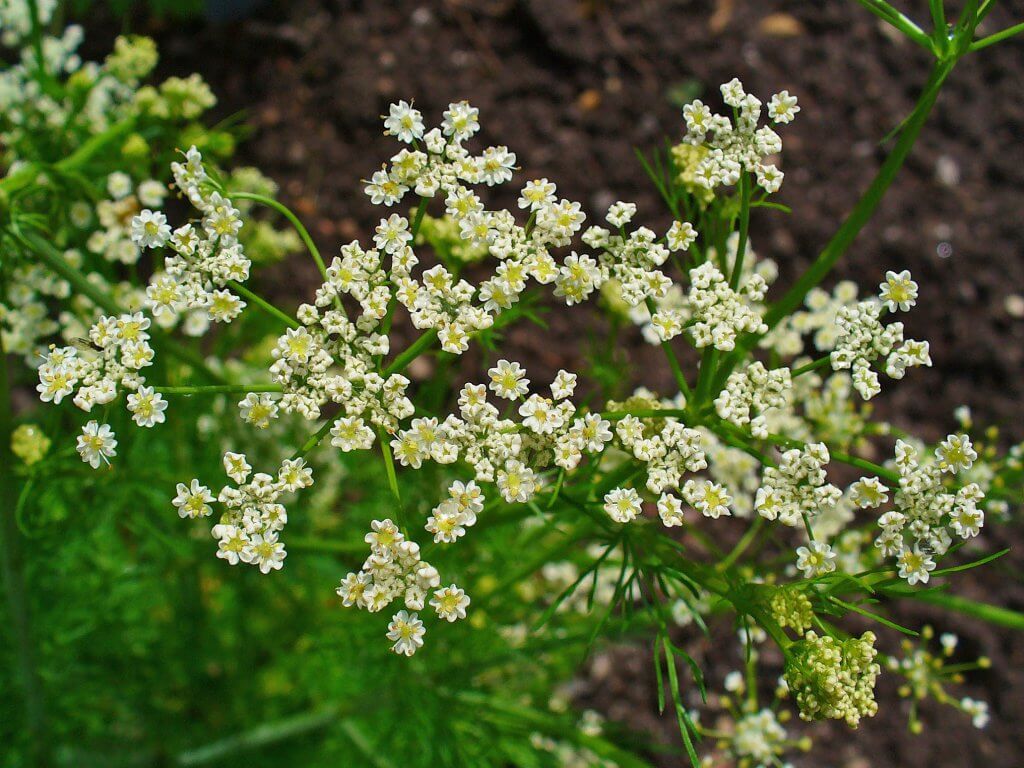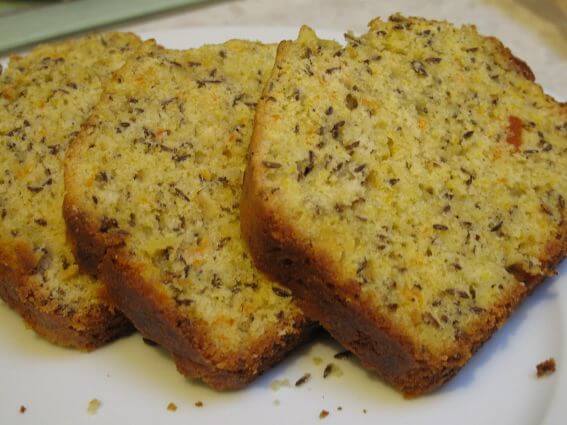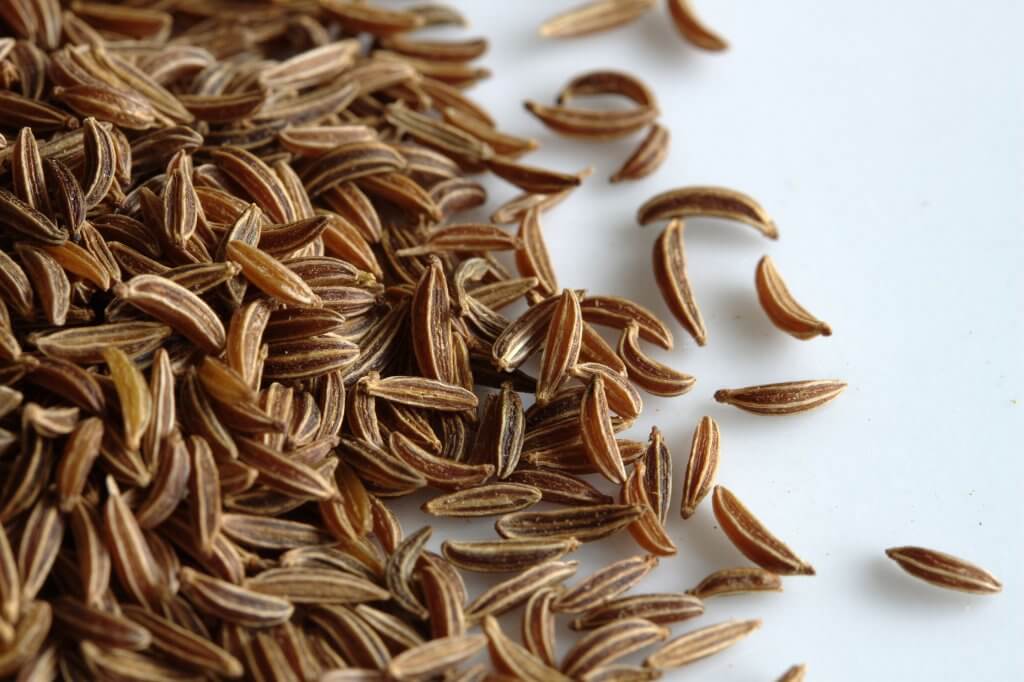Caraway (Carum carvi) is a member of the Apiaceae (carrot and parsley) family. You may recognise caraway from a number of other common names, including Persian cumin and meridian fennel. It is a biennial plant native to Europe, parts of North Africa and also Western Asia. The Carum family many species, however Carum carvi is the variety you are most likely to encounter.
You will typically find it growing within meadows, grassy slopes and even along roads and highways. It has fine feathery leaves coating its narrow stems, with a central stem holding a number of small white or pink flower clusters.

Cultivation and History of Caraway
Caraway was widely cultivated in medieval times by monks in monastery gardens and within German and French folk medicine. Many people still use it today in many recipes and foods throughout Europe and parts of Asia.
Today many farmers cultivate caraway for its fruits and essential oils. The country with the highest production rate is Finland, where over 1500 farms contribute. The cool climate being particularly favorable, especially with the long hours of sunlight. On wild plants you will find much smaller fruits than cultivated varieties. in part mainly because of many years of selective breeding.
For healthy growth, caraway prefers a sunny spot with well drained and nutritious soil. In cooler climates plant it in the summer months, as a biennial or annual. In warmer climates it is planted only as an annual.
Toxicity
Caraway is not toxic to consume, however experts warn that pregnant or breast feeding mothers should avoid taking it. If you are diabetic it is best to avoid caraway as it may lower your blood sugar. Caraway can increase the level of iron being absorbed by your body, therefore you must take care if you already have high iron levels. Too much caraway consumption could cause hemochromatosis.
Uses
Culinary uses of Caraway
The caraway plant has a variety of culinary uses. The fruits, roots and leaves have each been adopted into the cuisines of a wide selection of cultures. In middle eastern cuisines, caraway can be used to flavor an array of cakes and desserts, some of which have religious significance. In Europe many people use it to flavor casseroles, cakes and soups. Within the US many people use caraway to add flavor to breads, for example rye bread.
You can use the roots in a similar way to carrots and parsnips, by boiling or roasting. Use the leaves in a similar manner to parsley by adding them into soups and other dishes.

Products created with Caraway
Caraways essential oils are often used in the production of fragrant soaps, balms and even perfumes.
Medicinal uses of Caraway
Throughout history caraway has been valued as a healing aid. It was used in a many herbal remedies. The earliest mention of caraway as a medicine was in ancient Egypt where it was used as a digestive aid. Within European folk medicine it was said to relieve headaches and toothache. Press warm leaves against the afflicted area to help with healing.
A remedy of caraway and peppermint oil can provide relief from symptoms of heartburn including stomach pains and act reflux.

Did you know…
Caraway fruits are sometimes mistakenly called is the name erroneously given to the fruits of the plant. The fruits are the part you are most likely to use in recipes and dishes.
Conclusion
The delicate flowers and feathery leaves make caraway a dainty and ornamental addition to your garden or herb box. Each part of the plant providing some form of beauty or usefulness. Flavorful fruits and edible roots, caraway is the perfect herb to experiment with in the kitchen.
—————Written by Hannah Sweet
Hannah is a freelance writer and graphic designer from the UK. With a penchant for travelling, photography and all things botanical, she enjoys writing about a wealth of topics and issues, from conservation and slow living, to design and travel. Learn more about her writing and design services at www.sweetmeanders.co
Many of our readers find that subscribing to Eat The Planet is the best way to make sure they don't miss any of our valuable information about wild edibles.
See our privacy policy for more information about ads on this site






